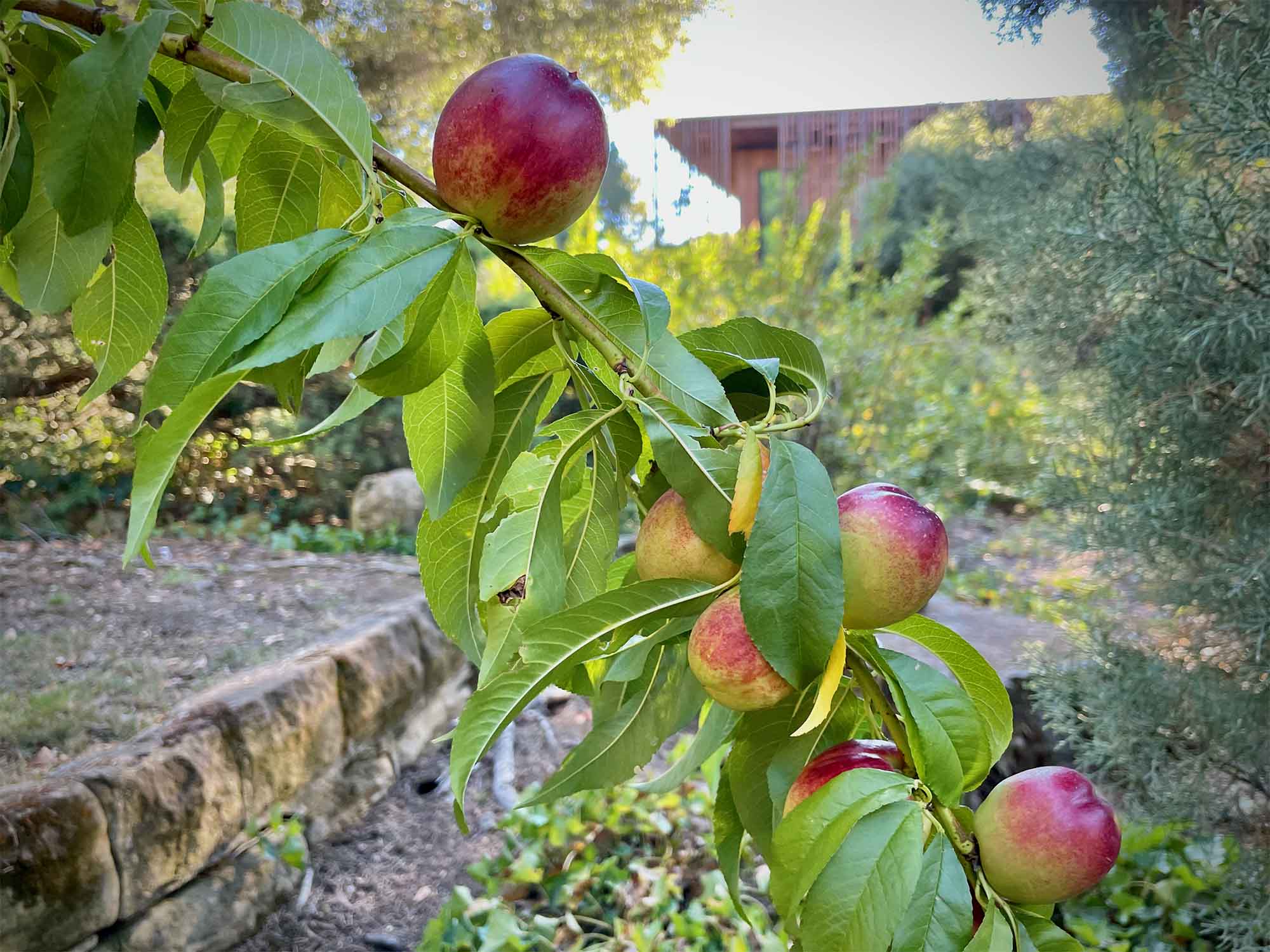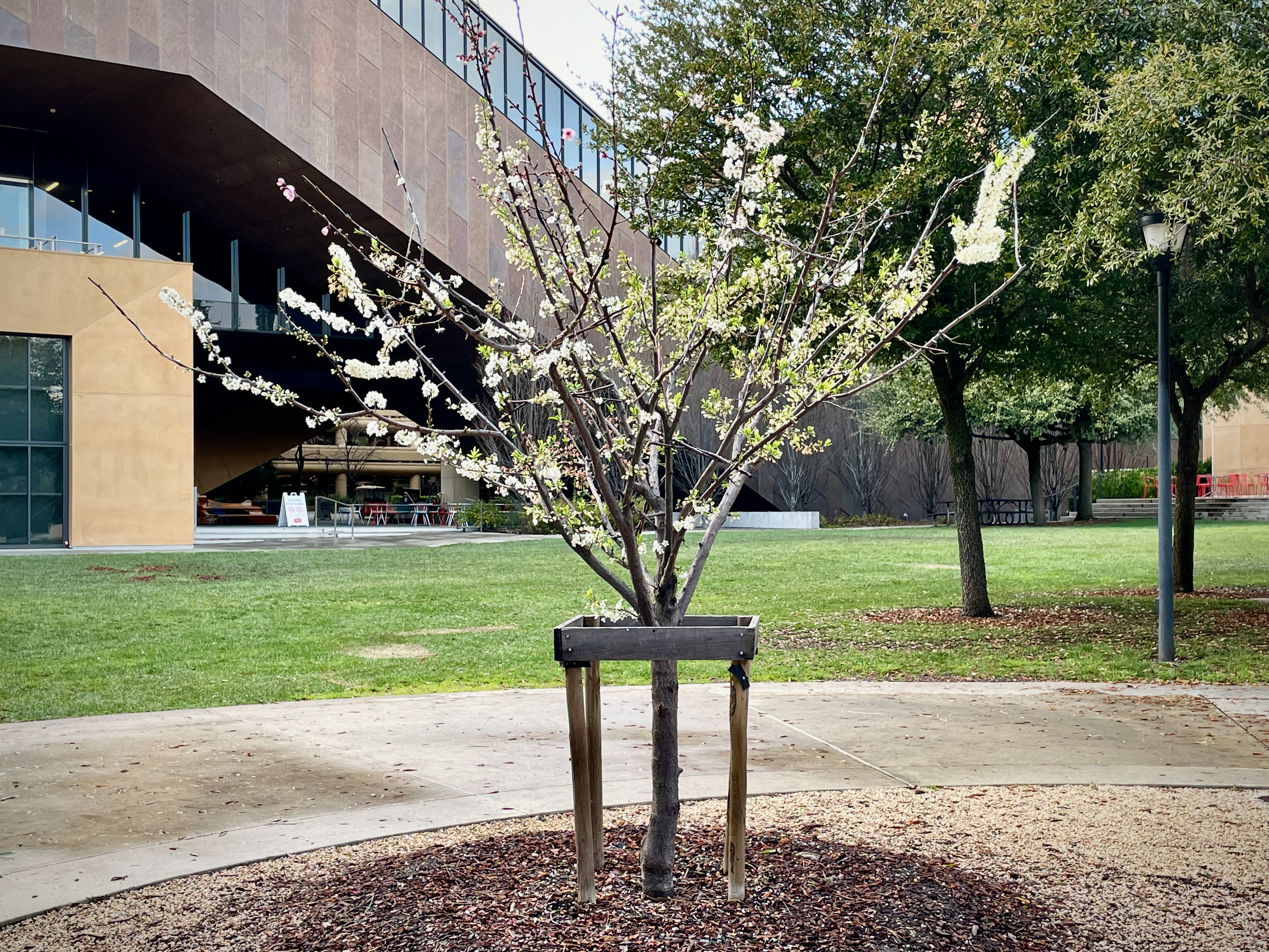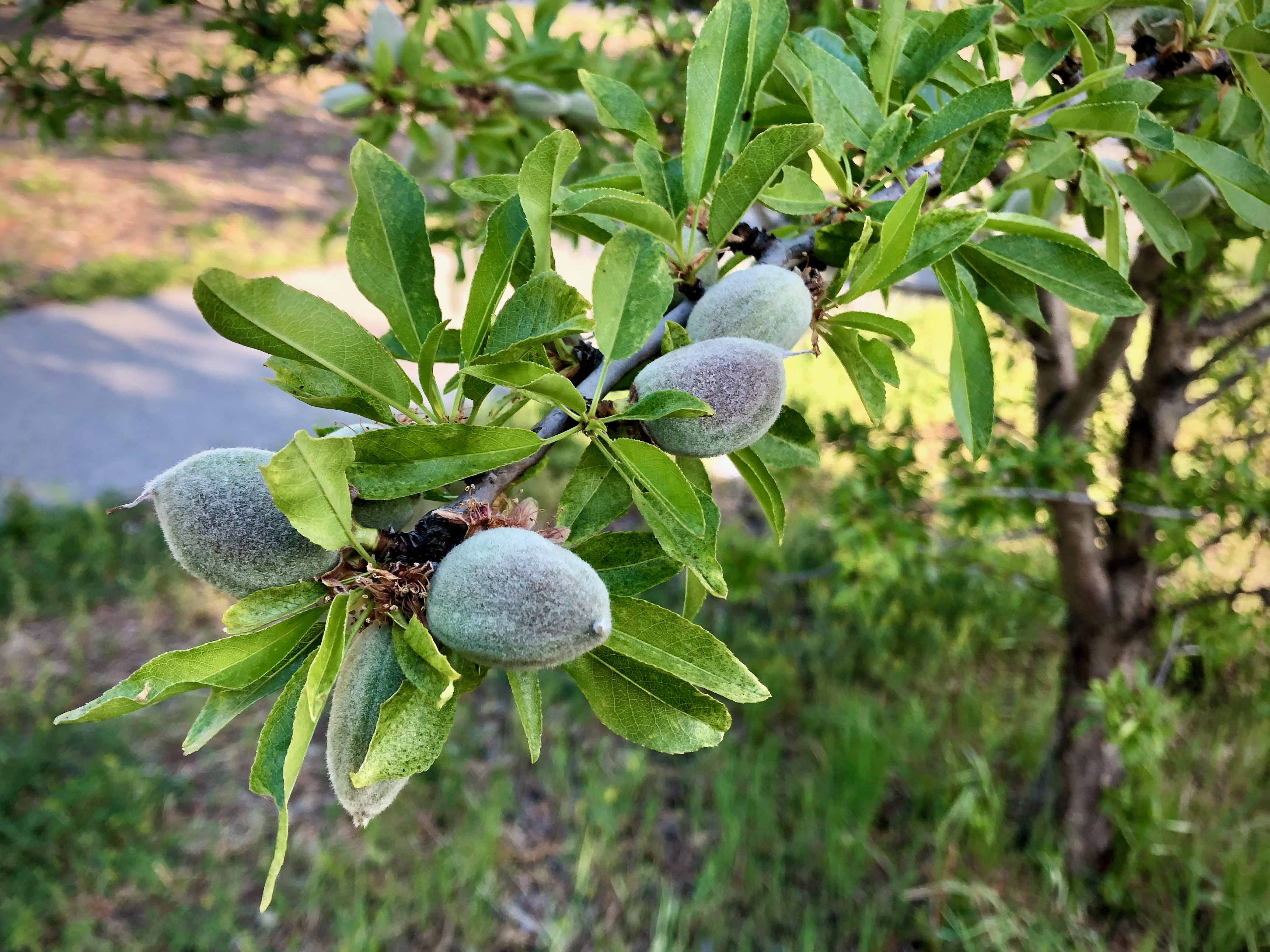Prunus armeniaca
 apricot
P. persica
apricot
P. persica
 peach
P. domestica
peach
P. domestica
 plum
P. amygdalus
plum
P. amygdalus
 almond
almond
An important commercial feature of the Santa Clara Valley before the days of silicon, the apricot tree (native to Northern China) can be found as an orchard survivor in residential areas and on campus is planted in home gardens. Squirrels and blue jays are eager to get the fruit before you do. The fallen pits are harvested by rodents who gnaw the smallest possible hole that gives access to the kernel and amass the curiously shaped leftovers in their retreats.
Peaches (P. persica, native to North Central China) and nectarines (which are basically fuzz-free peaches) are found in backyards of campus residences. A small group in the west courtyard of Florence Moore Hall has fared poorly. A young nectarine planted near the pond at Kingscote Gardens in 2017 was heavy with fruit just a few years later.
Several plums (P. domestica, native to Asia Minor) of variety Satsuma are at both corners of the California Avenue side of 2475 Hanover Street in Palo Alto. In some years, branches collapse from the weight of their fruit.
At the west end of the Rodin Sculpture Garden stands the Tree of 40 Fruit, near the Italian stone pines. Apparently forty varieties of stone fruit are grafted onto it. Now and then, one of these scions will outpace the rest and has to be pruned back.
Prunus amygdalus, the almond, native to the Transcaucasus, takes its species name from the Greek for that tree. Our brain’s amygdala has a prominent cluster of neurons shaped like an almond. With their narrow leaves and corrugated pits they are rather like peach trees. Almonds fruit readily where cross-pollination can occur. Several are scattered around the path on the northwest corner of the intersection of Santa Teresa Street and Campus Drive. Flowering varieties of almonds often have double flowers. P. dulcis, or sweet almond, is an older name. Bitter almonds, reputedly inedible, have been found in the Stanford Avenue greenbelt, possibly as a result of bitter almond root stock being used for grafts, and are likely dangerous to eat.
Related material: Sam Van Aken’s “Tree of 40 Fruit” at Stanford.
About this Entry: The main text of this entry is from the book Trees of Stanford and Environs, by Ronald Bracewell, published 2005. Removed mention of Old Union peach; added Tree of 40 Fruit, peaches/nectarines at Florence Moore, almonds at Campus Drive, plums on California Avenue; almond is now P. amygdalus, notes on etymology; minor edits; all locations up to date (Jun 2023, SP).






